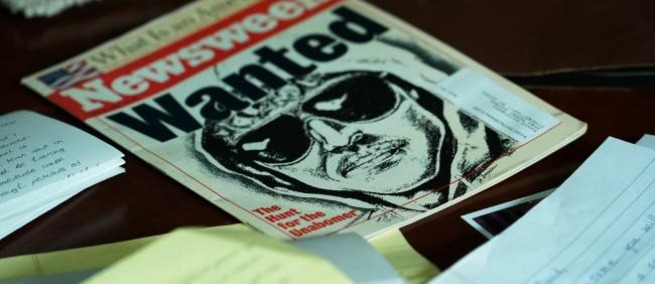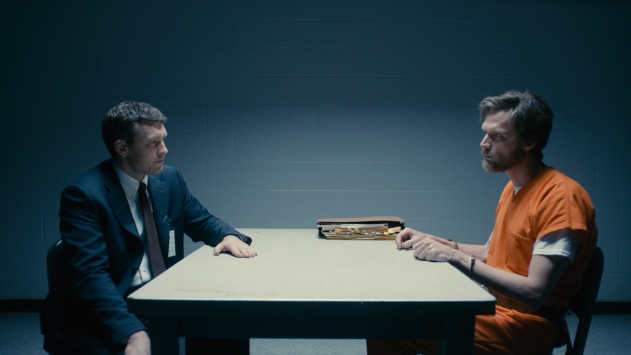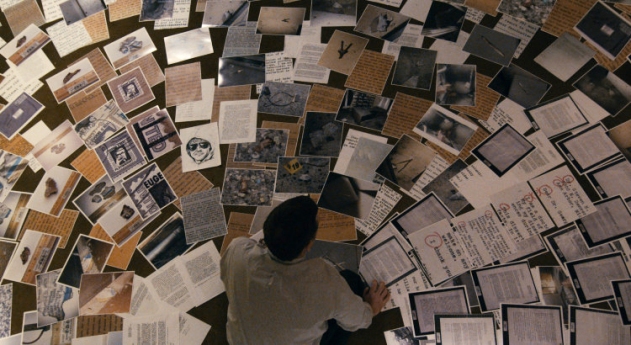
[Editor’s note: Discovery Channel’s new 8-part series MANHUNT: UNABOMBER is about the FBI investigator Jim Fitzgerald who identified the Unabomber as Ted Kaczynski based on his writings–pioneering the use of what is now called forensic linguistics. The series stars Sam Worthington and Paul Bettany, and also features Chris Noth, Elizabeth Reaser, and Brian F. O’Byrne. Science & Film commissioned Syracuse University linguistics professor Dr. Tej Bhatia to write about the case. The series is available via Netflix and Amazon.]
There is something remarkable about the way the human mind functions. When someone utters a word, our minds immediately go into overdrive and our auditory sensors flare up. Besides processing the content of what is being said, our minds unwittingly begin to construct non-linguistic information about the background of the speaker. Where did he or she come from? What social class or ethnic group does this person belong to? It is an intuitive, innate, and unconscious reflex that has nothing to do with the content of the message. In short, we don’t realize that we are constantly profiling each other. It may not be scientific or accurate, but it is in this way that our minds attempt to construct a picture, to make sense of the social world around us, and to sort out deeper identity questions, such as if the speaker belongs to a familiar group or to an outside group. The Shibboleth effect of identifying a social category!

Built on the strength of powerful conceptual and methodological breakthroughs in linguistics and other related interdisciplinary fields, such as cognitive sciences and cultural anthropology, forensic linguists have developed the art and science of cracking criminal cases based on unconscious (e.g. Freudian slips) and conscious (e.g. deception and manipulation) dimensions of language use. In other words, forensic linguists champion the skill of developing speaker or group profiles based on linguistic traits of the individual or group, creating linguistic “fingerprints.” It is important that these fingerprints be developed based on sound scientific methods that can withstand the scrutiny of courts.
Discovery Channel’s laudable thriller, MANHUNT: UNABOMBER, provides a rare glimpse into the forensic linguistic concepts, methods, and tools used by FBI profiler Jim Fitzgerald (played by Sam Worthington) that led to the capture of Ted Kaczynski (played by Paul Bettany). The FBI nicknamed Ted Kaczynski (who was caputured in 1996) the “Unabomber,” a hybrid of "UNABOM" (University & Airline Bomber), based on his choice of victims; his victims were either university or airline empolyees. The hunt for the Unabomber was the largest and most expensive criminal investigation ever undertaken in the U.S. In addition to the massive manpower employed, the investigation cost more than $50 million.

Ted Kaczynski had a brilliant career, and the FBI seemed to be no match for him. He received his undergraduate degree from Harvard and Ph.D. in mathematics from the University of Michigan. He had held a tenure-track faculty position in the Department of Mathematics at the University of California, Berkeley.
Kaczynski’s terrorist bombing activities spanned from May 25, 1978 to April of 1995. During these seventeen years he killed three people, injured scores of others, and almost succeeded in blowing up a mid-flight airliner. His killing spree ended when his own writing led the FBI to a small hillside cabin in Lincoln, Montana. He had sent trick letters, which at various points mocked the FBI and caused disarray.
Forensic linguistics offers a new, remarkable, frontier in evidence gathering–particularly when no other evidence is available to investigators, as was the case with the Unabomber. No fingerprints, hair samples, blood stains, DNA evidence, informants, eyewitnesses, or bomb part serial numbers were available to provide clues as to the Unabomber’s identity. Even the FBI’s oft-used psychological, criminal, and victimology profiling did not help. Ultimately, language evidence provided a ray of light at the end of the dark tunnel.

During the investigation, the FBI combed through 14 documents believed to have been written by the Unabomber and 178 documents supplied by Kaczynski’s brother and mother. Kaczynski’s documents were typed, with no traces of fingerprints or DNA. He also wrote a lengthy manuscript: the 35,000 word manifesto, Industrial Society and its Future, which was published in the Washington Post in September of 1995. Key words and phrases used in the manifesto, such as “cool-headed logician,” and the reversal of some social expressions such as "He can eat his cake and have it, too" for "He can have his cake and eat it, too," led to the identification of the Unabomber by Jim Fitzgerlad with the aid of Kaczynski’s brother. They uncovered the unique linguistic fingerprints of the Unabomber’s idiosyncratic writings.
With the growing threat of home-grown and international terrorism, forensic linguists–FBI investigator Jim Fitzgerald being one of the people who demonstrated the effectiveness of their methodology–are uniquely qualified to probe deep into the human mind and the various stages of radicalization using language as evidence.
TOPICS